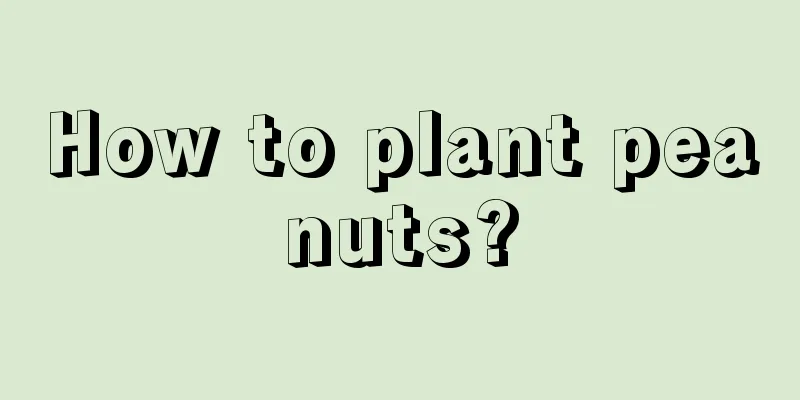How to plant peanuts?

|
Peanut is not only an important edible oil crop , but also used in food processing, livestock feed and pharmaceutical industries. In order to improve the yield and quality of peanuts, the choice of planting time and high-yield planting technology becomes crucial. So how to plant peanuts? Let’s take a look below. 1. Planting time In most areas, peanuts are usually planted in spring or summer. The best strategy for choosing planting time is a comprehensive consideration of local climate data, soil conditions and agronomic management requirements. 2. Soil preparation and improvement Choose soil that is loose, well-drained and has a pH of 6.0-7.0. Deep plowing and tillage are carried out, and organic and mineral fertilizers are added to improve soil structure and provide adequate nutrients. 3. Variety selection Choose high-yield varieties that are adapted to local climate and soil conditions and are resistant to pests and diseases, drought and cold. Commonly used varieties include Huayue No. 1, Qinhua Peanut No. 1, etc. 4. Planting density and row spacing Determine the appropriate sowing density and row spacing based on the variety and soil conditions, generally 100,000 to 150,000 plants per mu. Close planting helps increase yield and utilize soil resources. 5. Irrigation management Adopt a reasonable irrigation system according to the different stages of peanut growth and soil moisture conditions. Ensure adequate water supply, but avoid standing water or overwatering which can cause root suffocation and disease. 6. Fertilization technology Apply nitrogen, phosphorus, potassium and other nutrients reasonably according to the soil nutrient status and peanut growth requirements. Top dressing should be carried out in conjunction with the growth stages to increase plant height, flowering and pod-setting ability. 7. Pest and disease control Establish a comprehensive pest and disease control strategy, including pest and disease monitoring and early warning, reasonable prevention and control measures (such as biological control, chemical control, etc.) and good field hygiene management. 8. Timely harvesting and post-processing Harvest at the right time according to the growing period of the variety and the maturity of the pods. Pay attention to details during the harvesting process, such as avoiding damage to the pods and maintaining seed integrity. Proper drying and storage after harvesting is required to maintain the quality and nutritional value of the seeds. That’s it |
<<: When does iris bloom and how to care for it during the flowering period
>>: How to care for hibiscus and what should be paid attention to
Recommend
How to grow water ferns
1. Maintenance methods 1. Temperature: Water fern...
How to grow sweet alyssum
1. Maintenance methods 1. Temperature: It likes c...
How to grow Kalanchoe to make it bloom
1. Provide appropriate maintenance conditions If ...
What diseases does polyoxin control?
Polyoxin is a polyoxypyrimidine nucleoside agricu...
How to grow a money tree
1. Water appropriately If you want to grow the mo...
Put some money in flowers during the Chinese New Year, and your blessings will increase 100 times, welcoming the new year with prosperity!
Hang small lanterns on the lucky tree, and your l...
Environmental conditions and characteristics of Dieffenbachia
Environmental conditions and requirements for the...
Where is the best place to plant pineapple sugar apple?
Pineapple Custard Apple Planting Area Pineapple s...
The growing environment and local conditions of noodle dishes
Noodles growing environment and conditions Noodle...
Magnolia cultivation method
1. Cultivation Methods 1. Substrate: Before culti...
How often should potted strawberries be watered?
How often should potted strawberries be watered? ...
What is the reason for the yellowing of the leaves of the copper coin grass? What should I do if the edges of the copper coin grass turn yellow?
1. Too much light The pennywort cannot be exposed...
The flower language and legend of Phoenix bamboo
Flower language of Phoenix bamboo Meaning of risi...
Disease and Pest Control of Rhododendron chinense
1. Leaf swelling It generally mainly harms the fl...
Maintenance methods of Jade Plant
The Jade Plant, with its delicate and small leave...









